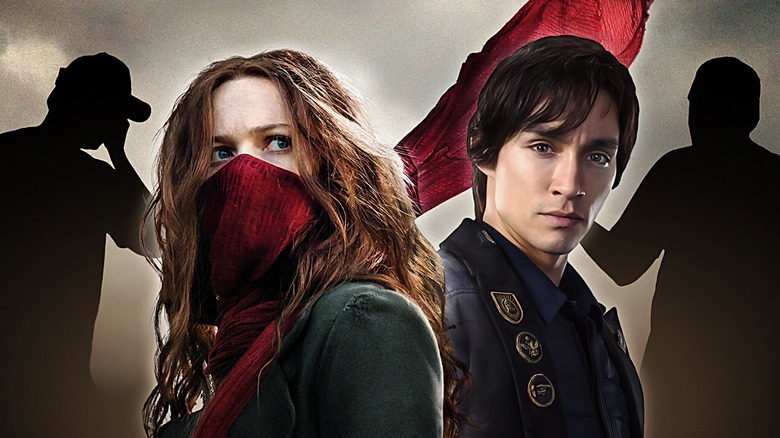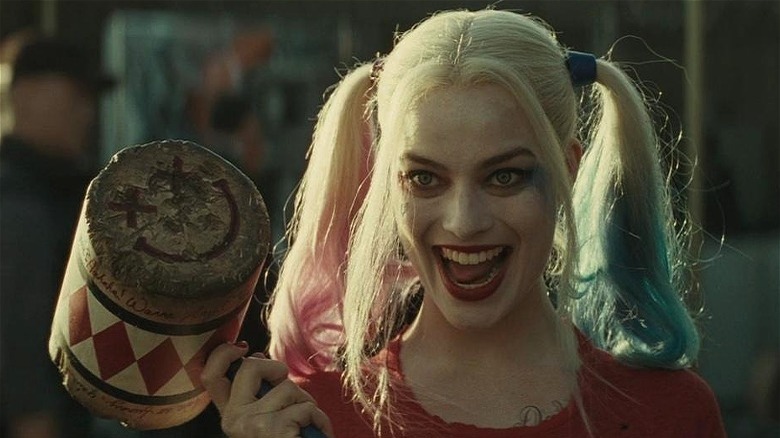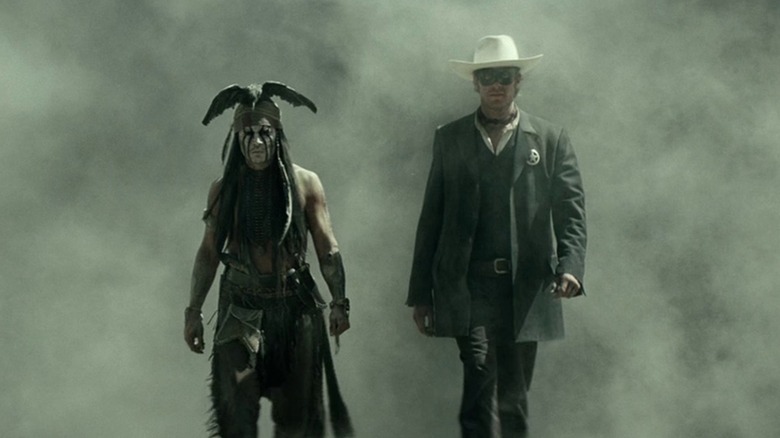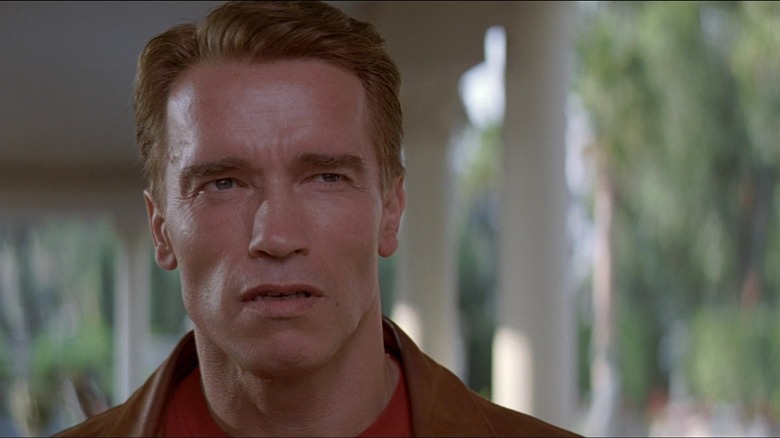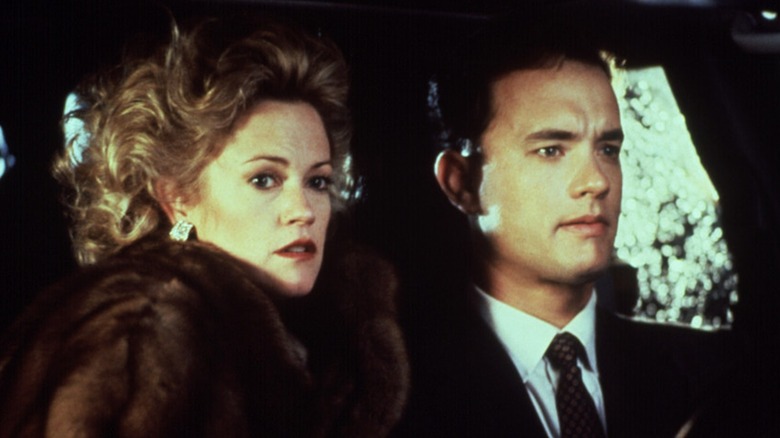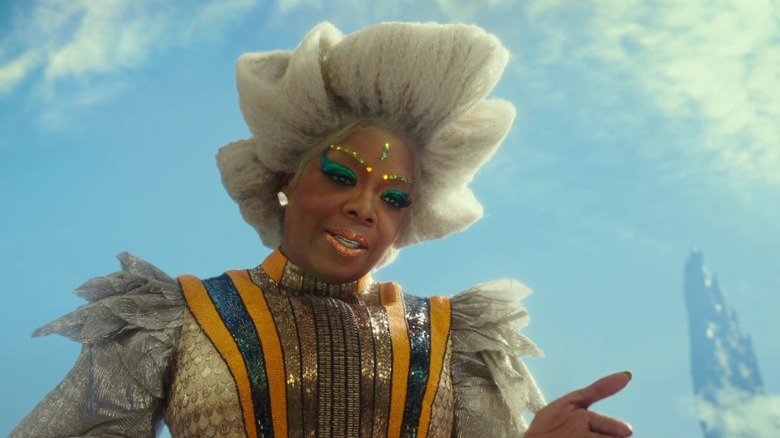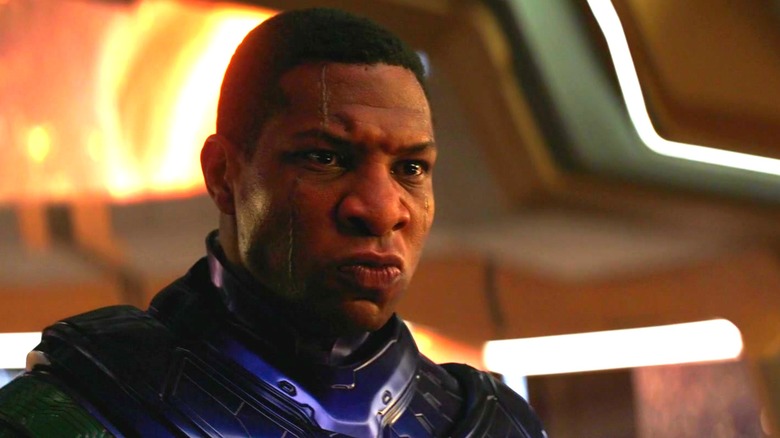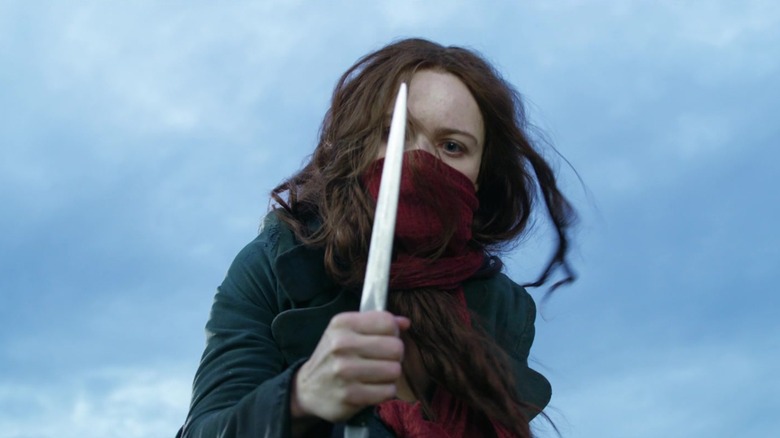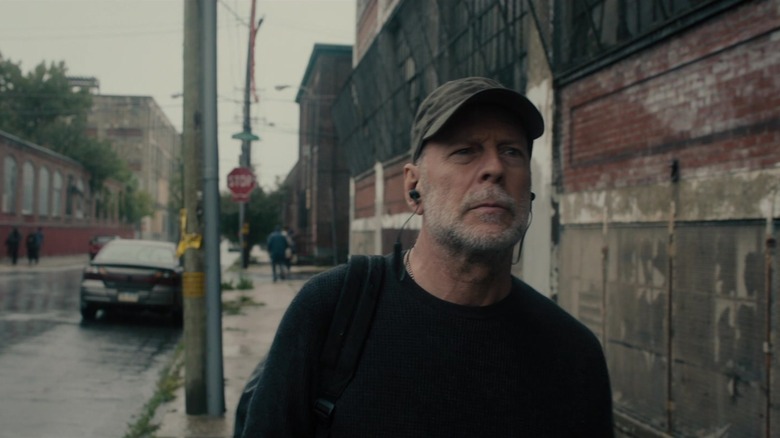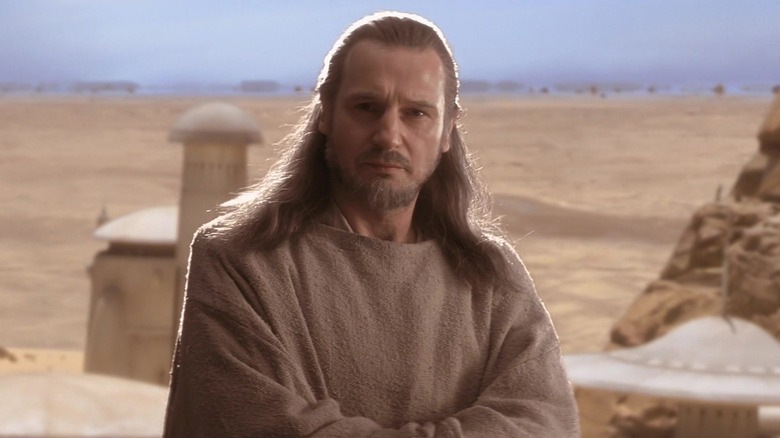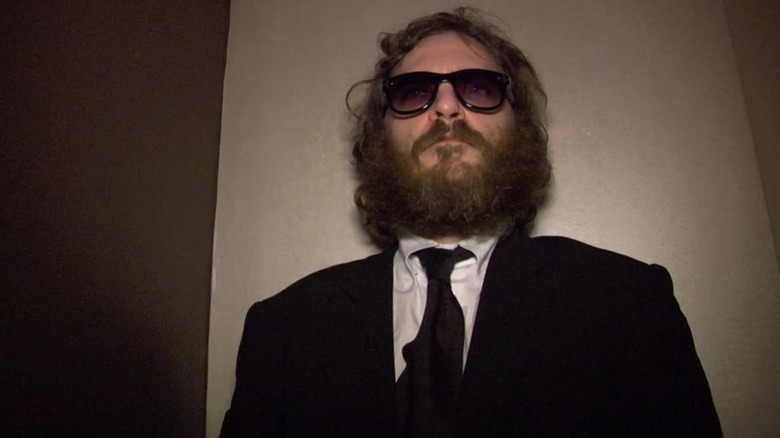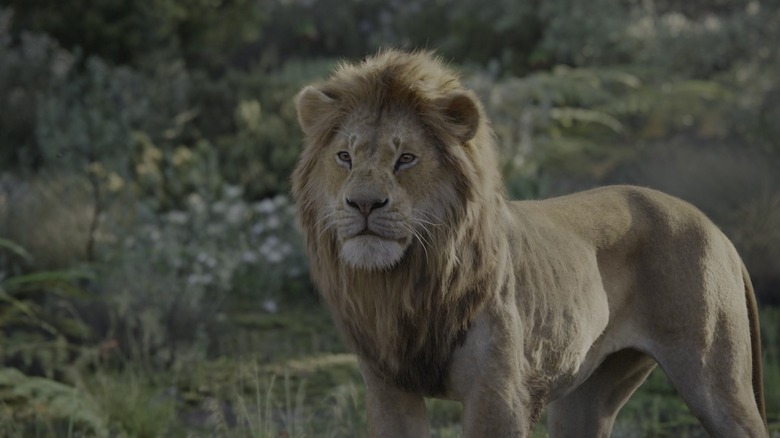Overhyped Movies That Ended Up Being Terrible
Have you ever watched a movie that a friend recommended to you, only to discover that it's actually quite awful? Well, imagine if that friend spent $100 million marketing that film as "the movie of the summer," and you can begin to understand the frustration audiences feel when an overhyped movie turns out to be terrible.
Plenty of movies are guilty of this, ranging from big-budget blockbusters to indie mockumentaries. Even with big names attached to a project, sometimes the best-laid cinematic plans will implode at the box office. But in some cases, the movie in question will actually perform well in theaters, even as critics and audiences hate it.
Sometimes an actor, director, or studio will say things to boost expectations for an upcoming film (even if they may be overstating its importance). Other times an awesome trailer or an eye-catching publicity stunt will generate buzz that isn't necessarily deserved. There are even times when the filmmakers don't need to do anything — the fans create all the hype themselves. Here are some of the most noteworthy movies that weren't quite as good as the filmmakers led us to believe.
Suicide Squad (2016)
It's easy to see why fans were blown away by the trailer for 2016's "Suicide Squad" that dropped at San Diego Comic-Con. With its ethereal music and haunting glimpses of deep-cut characters from the comics, this teaser whipped superhero fans into a frenzy. The trailer promised a wild new take on the Joker (Jared Leto), and while not all fans liked the Joker's grills and tattoos, most were at least intrigued by the new direction for the character. Plus there were accounts from cast members that Leto had sent his co-stars a dead pig, along with other gonzo things he did to remain in-character even when he wasn't filming, which also helped stoke the flames of anticipation.
Alas, "Suicide Squad" ultimately joined the ranks of epic trailers wasted on bad movies. The problem was that there were competing visions for the movie. Director David Ayer wanted a darker film, more in line with the tone of the Comic-Con trailer, while the studio wanted a more comedic tone. The studio won, but compromised the integrity of the movie in the process, causing many fans to bemoan what could have been. Despite being overhyped in the trailer, the Joker barely appears, and fans agree that the film is weaker for it. When the Joker does get screen time, the film only romanticizes his toxic relationship with Harley Quinn (Margot Robbie), making the movie even more cringe-worthy.
The Lone Ranger
Although the 2013 film "The Lone Ranger" is now notorious for imploding at the box office, there was actually a time when Hollywood thought it would be a sure hit. Disney poured $225 million into producing what they seemed certain would be the blockbuster of the summer. And why wouldn't it be? It promised a big-screen return for an iconic character, and it rounded up an all-star cast that included Armie Hammer, Johnny Depp, and Helena Bonham Carter. Director Gore Verbinski had previously launched a successful "Pirates of the Caribbean" franchise, and had already shown he could make an excellent Western with "Rango," so it seemed like a safe bet that his new Western would bring the house down.
Technically it did, but only in the sense that it set back the House of Mouse by almost $200 million, because that's how much "The Lone Ranger" lost at the box office. Viewers felt that the movie was way too long, in part thanks to a frame narrative that added nothing to the story. What's more, the film sparked controversy because it cast Johnny Depp to play Tonto instead of an Indigenous actor, and because Depp's portrayal leaned heavily into stereotypes about Native Americans. Critics accused the film of being bloated and indulgent, insisting that a Western had no need for such an excessive budget. Given how badly "The Lone Ranger" performed at the box office, they were probably right.
Last Action Hero
Even when "Last Action Hero" was still in the script phase, Hollywood smelled a hit. The premise (an ordinary boy who is transported into an action movie) was wildly subversive, even as it hit all the classic beats of the genre, so "Last Action Hero" seemed like it would hit the perfect sweet spot. The script was so hyped that it launched a bidding war, and Arnold Schwarzenegger loved it so much that he offered to star and executive produce. Adding to the project's lineup of action movie royalty was "Lethal Weapon" writer Shane Black and "Die Hard" director John McTiernan. Looking back, screenwriter Davor Arnott told We Minored in Film, "We really had a chance to make the 'Wizard of Oz' of action movies, the 'E.T.' of action movies."
Regardless of what the film could have been, the movie we got instead was underwhelming. Rather than being a smart send-up of action movies, "Last Action Hero" couldn't even make up its mind what genre it was supposed to be. The script underwent countless rewrites, with different directors, writers, and studio executives all playing tug-of-war. With so many cooks in the kitchen, the movie soon became a casserole made up of leftover ideas from different versions, from Whiskers the animated cat to the "Hamlet" references. The result was a mess, and once opening weekend arrived, "Last Action Hero" didn't stand a chance against the second weekend of "Jurassic Park."
The Bonfire of the Vanities
If you thought only blockbusters could be overhyped, think again. 1990's "The Bonfire of the Vanities" wasn't an action movie, but still seemed like a surefire hit, since it was based on the best-selling novel by Tom Wolfe. The film featured a who's-who of rising stars at the time, boasting the likes of Tom Hanks and Bruce Willis, plus director Brian de Palma at the helm. So sure was Warner Bros. of the movie's success that the studio began launching an Oscar campaign. However, the only major awards that "The Bonfire of the Vanities" was nominated for were the Razzies, and the film went on to become one of the biggest box office bombs of the year.
The movie tried to soften the satirical edge of the book, which pretty much undermined the entire point of the story. Also, casting Tom Hanks — an actor so universally liked that he earned the status of "American sweetheart" – to play a filthy-rich jerk was a head-scratching choice. But studio executives were worried that audiences wouldn't show up unless the protagonist was more likable, so they pushed to change the character (no matter that audiences didn't show up anyway). What's more, Willis had been chosen mostly for his name recognition, even though he wasn't the director's first choice. Finally, the filmmakers had to cut a script for a three-hour movie down to two hours, so it's no wonder the final film is barely coherent.
A Wrinkle in Time
In 2018, Disney released a movie adaptation of the classic sci-fi novel "A Wrinkle in Time." Not counting a terrible TV movie from 2003, it had taken more than 50 years to adapt the book for the big screen, and audiences finally had a chance to see the journey of Meg Murry (Storm Reid) in theaters. News that Oprah Winfrey would be joining the cast piqued the interest of moviegoers, while the lush imagery of the trailer sparked even more passionate excitement among fans. With Oprah's glowing endorsement of the movie as "a film for generations to come" (per Collider), the movie seemed like it would be an instant classic.
Despite high hopes, "A Wrinkle in Time" was a disappointment. Viewers felt it relied too much on the spectacle of CGI, which was not enough to compensate for the poor writing. Others were bothered by the movie's lack of subtlety. Since the movie simplifies some of the sci-fi concepts explored in the book and omits the allegorical parallels to Christianity, it fell short of the original novel's complexity. Critics gave it a score of 43% on Rotten Tomatoes, easily one of the most surprising Rotten Tomatoes scores of the year. "A Wrinkle in Time" also performed poorly at the box office – but then, since it was competing against a film like "Black Panther," that could hardly be unexpected.
Ant-Man and the Wasp: Quantumania
There was so much hype surrounding "Ant-Man and the Wasp: Quantumania." It was going to kick off Phase 5 of the Marvel Cinematic Universe (MCU) and introduce fans to the surreal Quantum Realm. It was also supposed to be a trilogy-capper and finale to the story of Ant-Man (Paul Rudd). Most of all, it promised the cinematic debut of Kang the Conqueror (Jonathan Majors) — an appearance especially anticipated because a Kang variant, He Who Remains, left such a strong impression in "Loki."
Was the film a box office success? No, and it was a huge disappointment on other fronts as well. "Ant-Man and the Wasp: Quantumania" surpassed "Eternals" as the lowest-rated movie in the entire MCU. The Quantum Realm was not exactly what fans hoped it would be — less like the colorful worlds of "Guardians of the Galaxy" and more like the campy assault on the senses from David Lynch's "Dune." As it turned out, the much-hyped Kang the Conqueror wasn't all that interesting. He was pretty much a standard supervillain, minus all the unpredictability of He Who Remains.
The film was pretty much doomed from the start, because even though it was supposed to be an Ant-Man movie, it was designed to be a stepping stone for future MCU projects. Ironically, this strategy backfired, since the MCU seems to be eliminating Kang's role in future projects.
Mortal Engines
Who wouldn't be psyched to see giant cities on wheels? The post-apocalyptic steampunk world of "Mortal Engines" seemed like it would appeal to fans of "Mad Max: Fury Road" and "Howl's Moving Castle" and was promoted as such. Its marketing campaign also wasted no time in reminding audiences that the script was written by none other than Peter Jackson. Universal Pictures was reportedly hoping the movie would kick off a franchise. Like the monstrous moving cities it featured, "Mortal Engines" seemed too big to fail.
It failed, of course, and many critics believe its size was the main reason it toppled. Fans have argued that the film was too ambitious, trying to cram too many aspects of an expansive world into a single film. What's more, the movie was stretched thin between too many characters. Hester (Hera Hilmar) is supposed to be the main character, but for much of the first act, viewers know almost nothing about her – other than that she wears a mask and wants revenge, but don't we all?
In retrospect, "Mortal Engines" had its work cut out for it. The film needed to compete against already-established franchises, but with the cast mostly made up of relative unknowns, it couldn't coast on star power. When "Mortal Engines" went up against superhero movies like "Spider-Man: Into the Spider-Verse" and "Aquaman," its engine sputtered, causing this colossus to crash and burn.
Glass
Nothing builds anticipation like a long wait. A superhero crossover film almost 20 years in the making, "Glass" intrigued audiences who wanted to see the payoff as the stories of David Dunn (Bruce Willis) from "Unbreakable" and The Horde (James McAvoy) from "Split" finally intersected. When director M. Night Shyamalan announced on X (formerly called Twitter) that he would finally film the conclusion to his Eastrail 177 Trilogy, social media erupted with excitement. It certainly didn't hurt that audiences seemed pleased with the film in its early screenings; Shyamalan wrote on X that studio execs also responded to 12 minutes of the film with a "very very gracious reaction."
Even though "Glass" was released in January — the notorious dumping ground for movies that are expected to fail – enough fans saw it to make the film profitable. But that didn't mean they were happy with what they saw. To the contrary, "Glass" is considered one of the worst movies of 2019. Most critics felt that the film's admirable attempts to reinvent the superhero genre fell flat because the story's execution was so clumsy. What's more, the much-hyped trilogy ends with David dying in the most anticlimactic way possible: drowning as he lies face-down in a puddle. Certainly this was an original way to end a superhero movie, but many fans were outraged because the movie's marketing had led them to expect something bigger. These beloved characters arguably deserved better.
Star Wars: Episode I -- The Phantom Menace
When "Star Wars: Episode I — The Phantom Menace" hit theaters, it had been 16 years since the last "Star Wars" film, and fans were salivating to return to this universe. Many millennials felt so excited about the movie because they knew it was meant for their generation, not their parents'. Fans purchased tickets weeks in advance and bought the soundtrack on CD; some were even willing to get up at 3:00 a.m. to watch the premiere.
They needn't have bothered. Unfortunately, "The Phantom Menace" turned out to be more concerned with its visual effects than its characters. In fact, the movie couldn't even make up its mind who the main character was. Most "Star Wars" fans couldn't care less about interstellar politics, yet that was exactly what the movie gave them right from the opening crawl. The taxation of trade routes was a far cry from the civil war teased at the beginning of "Star Wars: Episode IV — A New Hope."
Inevitably, the prequel was bound to invite comparisons to the previous three films. But did it really need to include several character archetypes that were obviously meant to mirror characters from the original trilogy? Seeing Qui-Gon Jinn (Liam Neeson) as the wise mentor and Jar-Jar (Ahmed Best) as the comic relief only made fans miss the original Obi-Wan Kenobi (Alec Guinness) and C-3PO (Anthony Daniels) — even though younger versions of both are also in the film.
I'm Still Here
Once upon a time, the world believed Joaquin Phoenix had quit his acting career to become a rapper. The film "I'm Still Here" claimed to be a documentary about Phoenix, capturing his descent into debauchery and mental instability. In reality, "I'm Still Here" is fiction, but Phoenix went to great lengths to maintain the illusion that it was a genuine documentary. He remained in-character on and off the set for more than a year, even appearing on The Late Show with David Letterman, and his mask never slipped once. Better yet, Phoenix and director Casey Affleck were coy about it, refusing to officially confirm that the star was in on the joke until the day of the film's release.
Despite the hype, the film wasn't all that good. Some viewers were frustrated that Affleck chose to announce that the film was fake, feeling that it would have been better to trust audiences to figure it out for themselves — especially since many viewers suspected as much anyway. The film was so over-the-top that it didn't take a genius to think that it was all too far-fetched to be true. Most critics agreed that once viewers stopped wondering if it's real, "I'm Still Here" lost its intrigue. With that question already answered before you even begin, there wasn't much reason to watch this movie.
The Lion King (2019)
Disney hyped the hell out of its so-called "live-action" remake of "The Lion King." The film's marketing campaign emphasized the groundbreaking technology that allowed the filmmakers to build a virtual-reality savannah and place the camera anywhere. With big names like Seth Rogen and Beyoncé attached to the project, and the promise of James Earl Jones reprising his role as Mufasa, it's easy to see why audiences were so excited. Even as Disney remakes were becoming increasingly commonplace ("Aladdin" had come out barely two months before), fans knew right away that if they were going to plunk down 10 bucks to see a rehash of a movie they'd already seen, then this was the one to see.
And see it they did. The remake may have earned $1.6 billion, but it's still considered one of the worst movies to cross the billion-dollar mark. Sure, it looked more realistic, but that did not automatically mean better. Some of the movie's most iconic moments (such as Mufasa's face in the clouds) simply didn't work when rendered in photorealism. The 2019 film needlessly recreated the 1994 movie almost shot-for-shot, and when it did add new material, it inserted pointless scenes whose only purpose seemed to be to show off the visual effects — which frustrated fans to no end. Even viewers who had never seen the 1994 version could tell right away that this version was inferior to the original.
